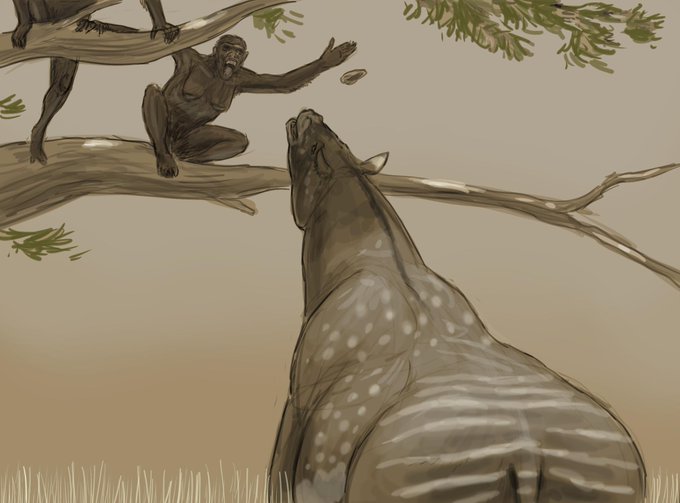homininsのTwitterイラスト検索結果。 30 件中 2ページ目
#FossilFriday Middle Pleistocene hominins. Elandsfontein skull from South Africa (~400 ka), Kabwe 1 skull from Zambia (~250 ka); Elandsfontein mandibular fragment superimposed to the Mauer mandible (~600 ka).
Source: https://t.co/UbZTKE8eYn Photo: Roberto Sáez.
Consumption of animals helped hominins to grow bigger brains, but is it still so important? @sujatagupta https://t.co/HLh27yw69u via @NatureNews
Early hominins evolved within non-analog ecosystems. Eastern African communities of large-bodied mammalian herbivores are ecosystem engineers and shape biotic communities that differed markedly from those today until ∼700,000 y ago. https://t.co/4eLu4XU1CC
The #Palaeolithic (‘Old Stone Age’) makes up the earliest chunk of the Stone Age – the large swathe of time during which hominins used stone to make tools. https://t.co/804sW1jnsf
#History
Adaptive Genetic Variants from Archaic Hominins Found in Melanesians https://t.co/nFZP9rQgbS
Results from the #paleostream! More humans. Sahelanthropus, a Denisovan, Australopithecus sebida and a gay H. erectus couple.
#paleoart #hominins #africa #art #sketching #sciart
Consumption of animals helped hominins to grow bigger brains, but is it still so important? @sujatagupta https://t.co/HLh27yw69u via @NatureNews
Did Nearby Supernovae Induce Hominins to Walk on Two Legs?
https://t.co/94wxShZ7So
#anthropology #paleoanthropology #astronomy #science
Brain ontogeny and life history in Pleistocene hominins https://t.co/VGC6IGjRGA via @RSocPublishing @jjhublin
New hominins for #Denisova just published. Denisovans lived at least 60 ka in the site.
https://t.co/ijIUUYdL4W



















